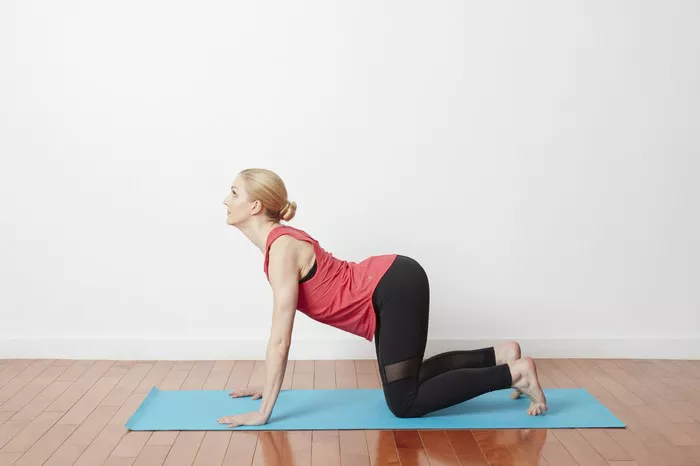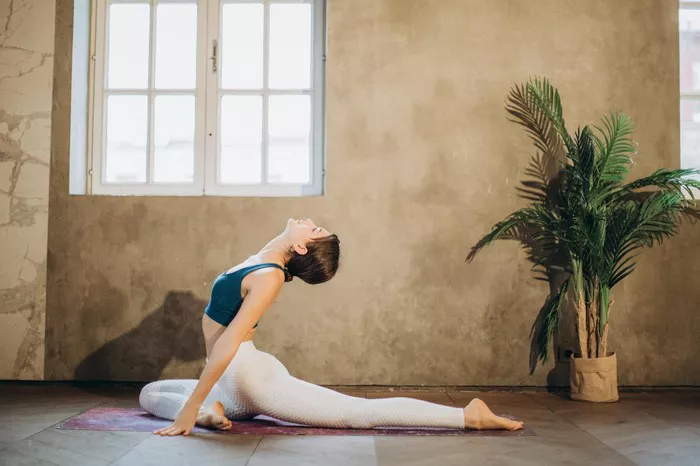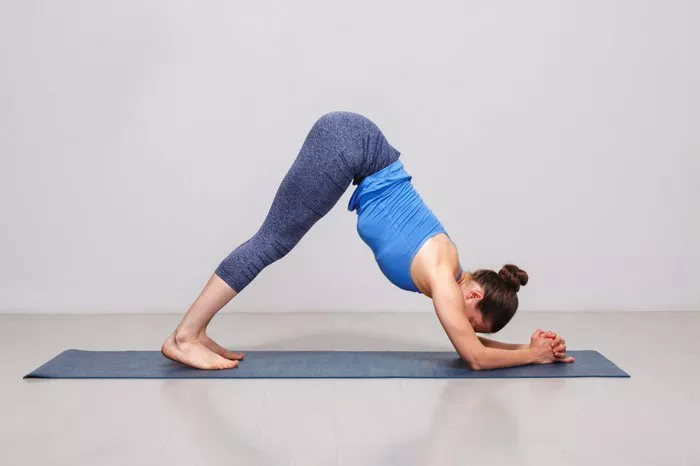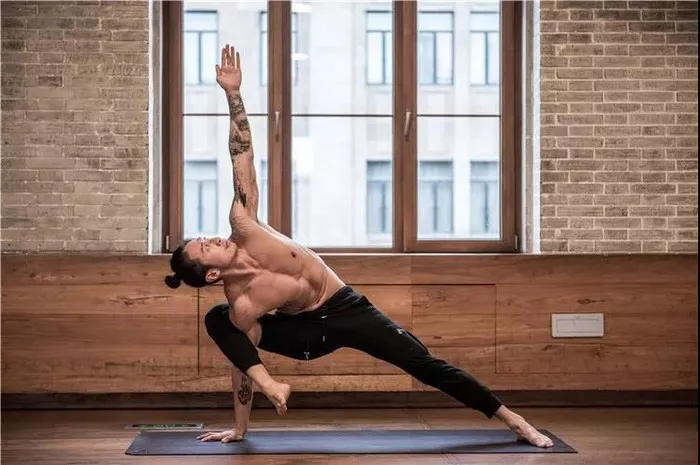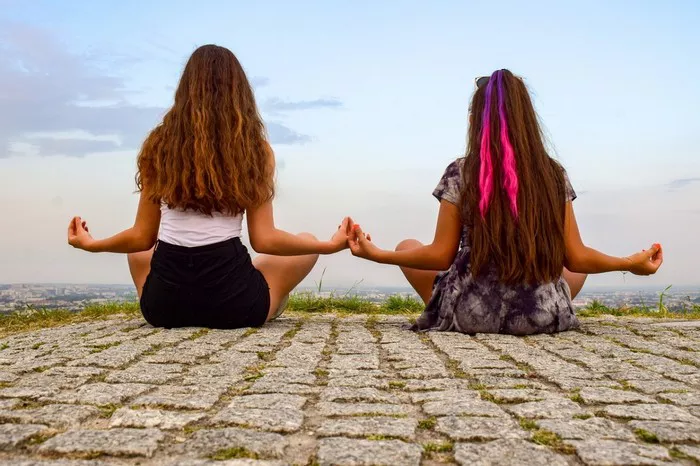In today’s sedentary lifestyle, where hours are spent hunched over desks or slouched on sofas, lower back and hip issues have become increasingly prevalent. These discomforts can hinder daily activities and impede overall well-being. Fortunately, yoga offers a holistic approach to alleviating these pains. With a combination of stretching, strengthening, and mindful movement, specific yoga poses can target and release tension in the lower back and hips. Let’s delve into some of the best yoga poses that can provide much-needed relief.
1. Downward-Facing Dog (Adho Mukha Svanasana):
Downward-Facing Dog is a cornerstone pose in yoga, renowned for its ability to stretch and strengthen multiple muscle groups simultaneously. This pose elongates the spine, decompresses the vertebrae, and releases tension in the lower back. Additionally, it engages the hips, hamstrings, and calves, promoting flexibility and mobility in these areas.
To perform Downward-Facing Dog:
- Start on your hands and knees in a tabletop position.
- Press into your palms, lift your hips towards the ceiling, and straighten your arms and legs.
- Lengthen your spine by reaching your tailbone towards the sky and pressing your heels towards the floor.
- Hold the pose for 5-10 breaths, focusing on deep inhales and exhales.
2. Child’s Pose (Balasana):
Child’s Pose is a gentle resting pose that provides a deep stretch for the lower back, hips, thighs, and ankles. It is an excellent posture for relieving tension and promoting relaxation after strenuous activity or prolonged periods of sitting.
To practice Child’s Pose:
- Kneel on the mat with your big toes touching and knees spread apart.
- Sit back on your heels and fold forward, extending your arms in front of you or alongside your body.
- Rest your forehead on the mat and relax your entire body.
- Breathe deeply into your lower back and hips, allowing them to soften with each exhale.
3. Pigeon Pose (Eka Pada Rajakapotasana):
Pigeon Pose is a potent hip opener that targets the piriformis muscle, which can often contribute to lower back pain when tight or inflamed. This pose stretches the outer hips and glutes while also increasing flexibility in the hip flexors.
To come into Pigeon Pose:
- Begin in a high plank position.
- Bring your right knee towards your right wrist and slide your right foot towards your left wrist, allowing your right shin to rest on the mat.
- Extend your left leg behind you, keeping your hips squared.
- Fold forward over your front leg, resting your forearms or forehead on the mat.
- Hold the pose for 5-10 breaths, then repeat on the opposite side.
4. Cat-Cow Pose (Marjaryasana-Bitilasana):
Cat-Cow Pose is a dynamic duo that mobilizes the spine and gently stretches the lower back and hips. This rhythmic movement improves spinal flexibility, releases tension in the back muscles, and increases circulation to the spine.
To practice Cat-Cow Pose:
- Begin on your hands and knees in a tabletop position, with your wrists directly under your shoulders and knees under your hips.
- Inhale as you arch your back, dropping your belly towards the floor and lifting your gaze towards the ceiling (Cow Pose).
- Exhale as you round your spine, tucking your chin to your chest and drawing your belly button towards your spine (Cat Pose).
- Continue flowing between Cat and Cow Poses for 5-10 rounds, syncing your breath with movement.
5. Bridge Pose (Setu Bandhasana):
Bridge Pose is an effective way to strengthen the muscles of the lower back, glutes, and thighs while simultaneously opening the chest and hips. By engaging the posterior chain, this pose helps to alleviate pressure on the lower back and improve posture.
To come into Bridge Pose:
- Lie on your back with your knees bent and feet hip-width apart, heels close to your glutes.
- Press into your feet and lift your hips towards the ceiling, engaging your glutes and thighs.
- Interlace your hands beneath your lower back and roll your shoulders underneath you.
- Hold the pose for 5-10 breaths, actively pressing into the feet and lifting the hips higher with each inhale.
6. Thread the Needle Pose (Parsva Balasana):
Thread the Needle Pose is a gentle yet effective stretch for the outer hips and lower back. It targets the piriformis muscle and helps release tension in the glutes, promoting greater ease of movement in the hips.
To practice Thread the Needle Pose:
- Begin on your hands and knees in a tabletop position.
- Slide your right arm underneath your body, bringing your right shoulder and temple to the mat.
- Extend your left arm overhead or place it on your lower back for support.
- Hold the pose for 5-10 breaths, feeling the stretch in the outer right hip.
- Repeat on the opposite side.
7. Seated Forward Fold (Paschimottanasana):
Seated Forward Fold is a rejuvenating stretch for the entire back body, from the hamstrings to the lower back. It helps release tension in the spine and promotes relaxation, making it an excellent pose for relieving stress and fatigue.
To come into Seated Forward Fold:
- Sit on the mat with your legs extended straight in front of you.
- Inhale to lengthen your spine, then exhale to fold forward from the hips.
- Reach for your feet, ankles, or shins, whatever is accessible without straining.
- Keep your spine long as you fold deeper with each exhale.
- Hold the pose for 5-10 breaths, then slowly release.
Conclusion
Incorporating these yoga poses into your daily routine can help alleviate lower back and hip discomfort, improve flexibility, and promote overall well-being. Remember to listen to your body and modify as needed, honoring any limitations or injuries. With consistent practice and mindful movement, you can unlock the relief and freedom your lower back and hips deserve.
FAQs:
Should I still do yoga with lower back pain?
If you have lower back pain, it’s essential to approach yoga with caution. While some gentle yoga poses may help alleviate discomfort, others could exacerbate the issue. Consult with a healthcare professional or a qualified yoga instructor who can suggest modifications tailored to your condition. Avoid poses that strain your lower back and focus on gentle stretches that promote flexibility and strengthen supportive muscles.
Is yoga or Pilates better for back pain?
Both yoga and Pilates offer benefits for managing back pain, but the effectiveness can vary depending on individual preferences and conditions. Yoga typically emphasizes flexibility and relaxation, while Pilates focuses on core strength and stability. Some may find relief through the mind-body connection in yoga, while others may prefer the targeted muscle strengthening in Pilates. Experiment with both to see which better addresses your needs and consult with a professional for guidance.
What is the best gentle exercise for lower back pain?
Swimming is often considered one of the best gentle exercises for lower back pain. The buoyancy of water reduces pressure on the spine while providing resistance for strengthening muscles. Additionally, swimming promotes overall cardiovascular health and flexibility without putting strain on the back. Other low-impact exercises like walking, cycling, or gentle stretching routines can also be beneficial. Start with activities that feel comfortable and gradually increase intensity as your back pain improves, always being mindful of your body’s limits and seeking professional advice if needed.

